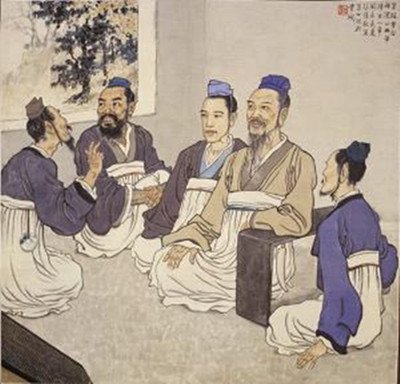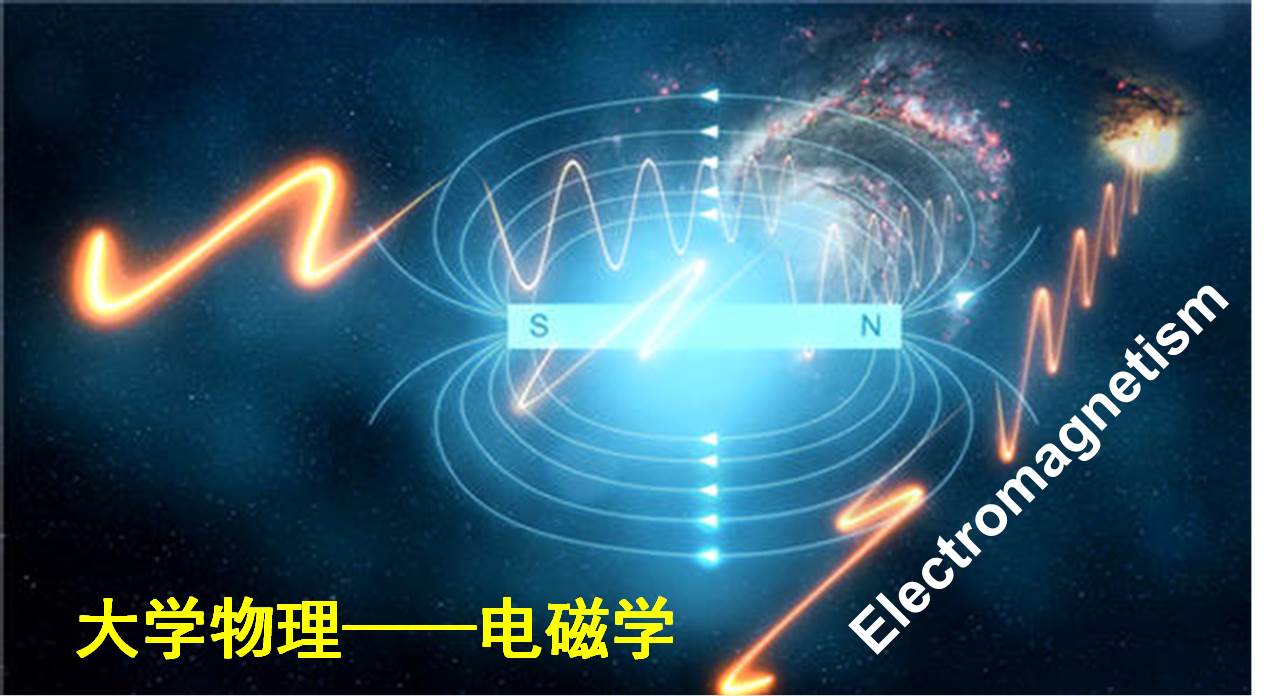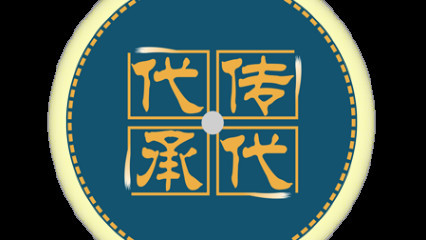
当前课程知识点:Diagnostics in Chinese Medicine > Week 9 Diagnosis methods: Inspection of tongue > 7.3 Observation of tongue coating > 7.3.1 Observation of coating texture
返回《Diagnostics in Chinese Medicine》慕课在线视频课程列表
返回《Diagnostics in Chinese Medicine》慕课在线视频列表
同学们好
现在我们继续学习
舌诊之望舌苔
舌苔 是指舌面上的一层苔状物
由胃气蒸化水谷之气而产生
正常的舌苔
为薄白苔 颗粒均匀 干湿适中
由于患者的胃气有强弱
病邪有寒热
所以可以形成不同的病理性的舌苔
所以我们通过望舌苔
可以来诊断胃气的有无以及病邪的性质
首先我们来学习
第一个部分就是 望苔质
苔质 是指的
舌苔的质地和形态
它主要观察
舌苔苔质的
厚薄 润燥 腐腻 剥落 偏全和真假等
方面的变化
我们先来学习 薄苔和厚苔
薄苔 是指的
透过舌苔 能隐隐地见到舌体的舌苔
又叫见底苔
厚苔 是指的透过舌苔
不能够见到舌体的舌苔
又称为不见底苔
我们看这两张图
左边这张图 就是薄苔
我们可以透过舌苔
看到舌面上的舌乳头
以及舌肌部分
这种舌苔就是薄苔
而右边这张图 是厚苔
我们透过舌面上的舌苔
尤其是透过厚厚的舌苔
看不到舌下肌肉的部分
这种舌苔就是厚苔
厚苔和薄苔主要反映
邪正的盛衰以及邪气的浅深
薄苔 首先是有苔
所以它是有胃气的
其次 薄苔 是正常的舌苔
或接近正常的舌苔
因此 即使有病 病情也不重
所以 薄苔通常见于表证初起
里证病情轻浅 胃气未伤的病变
厚苔 首先也是有苔
表明有胃气 正气尚充足
其次 厚苔 一定是有病变的
而病变一定来自于邪气
通常与宿食积聚
或痰湿停聚有关
所以 厚苔主要见于里证
相对于薄苔而言
厚苔的病情是比较重的
厚苔和薄苔
可以随着病情变化而相互转化
如果舌苔由薄转厚
通常表明 邪气由浅入深
由轻到重 病情是在加重
如果舌苔由厚转薄 通常表明
正气胜邪 病情减退 疾病在好转
我们用这两个例子来说明
比如 第一个例子
是病情初起时见薄白苔
经过一段时间之后
舌苔不断加厚 变成黄厚腻苔
舌苔由薄变厚
说明了邪气渐渐的入里化热
这是病情加重的表现
而下面这个例子
舌苔原先见黄厚黏腻苔
邪气较重 湿热比较明显
通过清热化湿治疗之后
舌苔渐渐变薄 接近于正常的薄白苔
说明清热化湿的治疗是有效的
病情在好转
所以厚苔和薄苔 随病情变化而发生转化
由厚转薄 病情是减轻
由薄转厚 病情在加重
下面我们来学习 润苔和燥苔
润苔 是指的舌苔润泽有津
干湿适中 不滑不燥
而燥苔 是指舌苔干燥
扪之无津 甚则舌苔干裂
润苔和燥苔
主要反映体内的津液盈亏和输布情况
润苔 正常人可以见润苔
表明津液充足的
病变时也可见润苔
那这是什么病呢
什么病不会损伤津液呢
答案是
寒邪 和湿邪 这一些阴邪引起的
寒证或湿证
它不会损伤津液 因而可以见到润苔
而燥苔 表明津液已经受伤
比如 热证或燥证
会损伤津液而出现燥苔
另外阳虚 津液不能够上承到舌面
也会表现出来干燥
这种阳虚 津液不能上承
是我们通常容易忽略的一个原因
润苔和燥苔 也会随着病情变化 而相互转化
如果舌苔由润转燥
说明 第一 热邪在加重 损伤津液
第二 阳虚在加重 津液失去了输布
所以由润变燥 通常是病情加重的表现
如果舌苔由燥变润
说明 第一 热邪在减退 津液在恢复
第二 阳气回复 饮邪已经被蒸化
这是病情好转的征象
所以润苔和燥苔 随病情变化 也会发生转化
由润变燥 病情是在加重
由燥变润 病情是在好转
第三个 我们来学习 腐苔和腻苔
腻苔 是我们生活中间非常常见的一种舌苔
尤其是在中国南方
腻苔 是指的苔质颗粒细腻致密
揩之不去 刮之不易脱落的一种舌苔
看这几张图
图中显示 舌苔都很脏很厚
而且有一种油腻腻的感觉
这些舌苔的颗粒细腻而致密
在生活中
看到这种舌苔的人
有很多人就会用牙刷去刷 但是刷不掉
这种舌苔就叫做腻苔
下面这张图
舌苔的颗粒比较粗大 象豆腐渣堆积在舌面上
根底松浮 揩之易去
或成片脱落 脱落之后舌底光滑
这种舌苔就是腐苔
腻苔和腐苔 都是舌苔上堆积了很多苔状物
这种苔状物都与湿浊 痰饮 饮食积滞有关
腐苔的形成 多因阳热有余 胃中浊邪上泛之蒸
聚积于舌面而形成的
主 食积胃肠 痰浊内蕴
如果 腐苔的舌苔成片的脱落
脱落之后 舌底光滑
表明这种腐苔是有胃气衰败的表现
而腻苔 刮之不去 揩之不易脱落
表明胃气充足 但是邪气亢盛
这个邪气主要与
湿浊 痰饮 饮食积滞等阴邪有关
在中国南方地区 由于湿气较重
所以腻苔是非常常见的舌苔
由于湿浊 痰饮 饮食积滞这些阴邪堆积舌面上
本来的颜色应该是白色
阴邪 邪气重
则舌苔质地通常偏厚
而阴邪不会伤津
则舌苔质地是润泽的
因此腻苔的完整描述
应该是白 厚腻而润苔
通常简称为白腻苔
如果白腻苔 由白转黄 而成黄腻苔
则表明湿浊 痰饮 饮食积滞已经化热
而为湿热 痰热或食积化热的征象
第四种 是剥(落)苔
剥苔 是指舌苔全部或部分的剥落
剥落处的舌面 光滑无苔
我们来看这张剥落苔的图
这张图的舌面上有少许舌苔 而且看起来不牢固
如果被压舌板给刮掉之后
舌面上就没有舌苔了
因此剥苔又可以描述为少苔或无苔
类剥苔 是指舌苔剥落处舌面不光滑
仍有新生的舌苔颗粒 或舌乳头可见
剥苔和类剥苔 通常都见于虚证
与胃气不足 胃阴枯涸或气血两虚有关
因为我们前面讲过 舌苔是胃气熏蒸
胃气上潮而形成的
有舌苔则有胃气 有正气
舌苔剥落 表明了胃气 正气亏损
如果舌苔完全剥落
表明正气亏损严重
剥落苔 是哪种正气不足造成的
这需要根据舌色的变化来判断
比如这张剥苔图
整个舌质的颜色是红色的 所以有热
而舌苔少 甚至无苔 表明有虚
因此舌红苔剥
或舌红 少苔或无苔
是有虚 又有热的征象
所以这是阴虚火旺典型表现
如果舌淡苔剥
而且出现类剥苔
通常是由于血虚和气血亏虚所引起的
如果舌苔完全剥落
舌面光洁如镜 称之为镜面舌
镜面舌有两种
一种是红色的镜面舌 由于舌苔完全剥落
正气大亏
红色镜面舌 为胃阴枯涸 胃阴大亏的表现
属阴虚重证
另外一种是白色的镜面舌
舌色晄白如镜
甚至毫无血色 通常为
营血大亏 阳气将脱的危重证候
镜面舌 不管是红色的镜面舌也好
还是白色的镜面舌也好
它们都是属于人体的正气严重亏损所引起的病证
还有一种剥落苔 叫做地图舌
它是指 舌苔不规则剥脱 边缘凸起
界限清楚 形似地图
部位时有转移
地图舌通常是由于胃气 胃阴不足所导致的
观察舌苔的有无 消长和剥落变化
不仅能测知胃气 胃阴的存亡
还可以反映邪正盛衰
判断疾病的预后
如果舌苔从有到渐渐地剥落
表明正气也在渐渐地亏损
如果舌苔剥落后
又慢慢长出薄白苔
这是邪去正胜 胃气渐渐恢复的好的征象
下面 我们用这两张图
来说明正常舌苔和镜面舌的区别
因为有些人
在描述自己的舌头时候
说自己舌面上面没有舌苔
其实他所表达没有舌苔
是指的这种薄白苔
薄白苔和完全没有舌苔的镜面舌的区别就是
薄白苔 是舌面上可以看到薄薄的一层舌苔
尤其是可见到有颗粒状的舌乳头
而镜舌面上完全没有舌苔
而且颗粒状的舌乳头也是完全见不到的
薄白苔是属于正常的
说明正气充足 而且没有邪气
而镜舌面 是属于正气大亏
红色的镜面舌 是属于胃阴枯涸
白色的镜面舌
是营血大亏 阳气将脱之象
第五种 我们要看看偏 全苔
全苔 是指舌苔遍布舌面
偏苔 是指舌苔仅仅只是布于某一个局部
全苔 通常为邪气弥散 湿痰阻滞引起的病症
而偏苔表明舌面所分候的脏腑有邪气停聚
比如舌苔偏于舌尖
表明邪气入里未深 而胃气已经受伤
舌苔偏于舌根 表明外邪虽然退了
但是胃滞依然存在
舌苔仅见于舌中
表明痰饮 湿浊停滞在中焦
舌苔偏于左或者是右
因为舌两边对应肝胆经
所以它与肝胆湿热有关
第六 也是最后一个就是 真假苔
真苔 是指的舌苔紧贴在舌面 不容易刮去
又称为有根苔
而假苔 是指舌面上舌苔不紧贴于舌面
容易被刮掉
刮掉以后再也没有舌苔
可以见到光洁的舌面 又称为无根苔
如果假苔完全刮去之后 就称为镜面舌
真苔和假苔对于辨别疾病的轻重预后有着重要的意义
真苔 表明了有胃气
当疾病初期和中期时 见厚厚的真苔
表明了胃气壅实 病情比较深重
久病见真苔 表明胃气仍然还存在
而假苔 表明胃气匮乏
新病见假苔 表明邪气渐聚 病情比较轻
久病见假苔 表明胃气匮乏 病情较重
以上 是望舌苔的苔质的内容
下节课我们将继续学习
望舌苔的苔色的内容
同学们 本节课就讲到这里
-Introductory remark
--QQ groups、WeChat public account
-Introduction
--【Discussion 1】Why do you want to take this course?
-Unit test for Introduction
-1.1 Yin-yang theory
-1.2 The theory of five elements
--1.2.1 The theory of five elements
--1.2.2 Application of the theory of five elements
-Frequently Asked Questions
-Unit test for week 1
-2.0 Outline
--【Discussion 2】How to understand the holistic view centered on the Zang Fu theory?
-2.1 Liver
--【Discussion 3】Why is repose more important than vigorous exercise in recuperation for patients with
-2.2 Heart
-2.3 Spleen
-2.4 Lung
--2.4 Lung
-2.5 Kidney
-2.6 Six fu organs
-Frequently Asked Questions
-Unit test for week 2
-3.1 Qi
--3.1 Qi
-3.2 Blood
-3.3 Body fluid
-3.4 The relationship of qi, blood and body fluid
--3.4 The relationship of qi, blood and body fluid
--【Discussion 4】A discussion about the theory of qi, blood and body fluid
-Frequently Asked Questions
-Unit test for week 3
-4.0 Outline
-4.1 Six exogenous factors
--4.1.2 Nature and pathogenicity of wind and cold
--4.1.3 Nature and pathogenicity of summer heat and damp
--4.1.4 Nature and pathogenicity of dryness and fire
-4.2 Etiology of visceral impairment
--4.2 Etiology of visceral impairment
-Frequently Asked Questions
-Unit test for week 4
-5.0 Outline of inquiry
--【Discussion 5】If you were a patient, how would you describe your condition to your doctor first?
-5.1 Inquiry of Chills and fever
--5.1.1 Chills and fever(Aversion to cold with fever)
--5.1.2 Chills and fever(Chills without fever)
--5.1.3 Chills and fever(Fever without chills)
--5.1.4 Chills and fever(Alternative chills and fever)
--【Discussion 6】How to understand "if you have clinical manifestations of cold, that is exterior syndr
-5.2 Inquiry of perspiration
-Frequently Asked Questions
-Unit test for week 5
-5.3 Inquiring of pain
--【Discussion 7】How to understand "stagnation leading to pain and innourish leading to pain"?
-5.4 Inquiring of head, body, thorax and abdomen
--5.4 Inquiring of head, body, thorax and abdomen
-5.5 Inquiring of ears and eyes
--5.5 Inquiring of ears and eyes
-5.6 Inquiring of sleep
-5.7 Inquiring of food and drink, appetite and taste
--5.7 Inquiring of food and drink, appetite and taste
-5.8 Inquiring of defecation and urination
--5.8.1 Inquiring of defecation
--5.8.2 Inquiring of urination
-5.9 Inquiring of infantile and women's disease
--5.9 Inquiring of infantile and women's disease
-Unit test for week 6
-6.0 Outline of Observation
--【Discussion 8】Please use the whole body inspection (including the expression, complexion and figure)
-6.1.1 Observation of vitality
--6.1.1 Observation of vitality
-6.1.2 Observation of the color
--6.1.2.1 The content, principles of inspection of the color
--6.1.2.2 Indication of diseases by five colors
--【Discussion 9】How do you understand the normal complexion of a normal people?
-6.1.3 Observation of the appearance
--6.1.3 Observation of the appearance
-6.1.4 Observation of figure and posture
--6.1.4 Observation of figure and posture
-Unit test for week 7
-6.2.1 Observation of head and face
--6.2.1 Observation of head and face
-6.2.2 Observation of five sensory organs
--6.2.2.1Observation of five sensory organs(observation of eyes,ears,nose)
--6.2.2.2Observation of five sensory organs(observation of lips,teeth and gums,throat)
-6.2.3 Observation of body
-6.2.4 Observation of limbs
-6.2.5 Observation of two lower orifices
--6.2.5 Observation of two lower orifices
-6.2.6 Observation of skin
-6.3 Observation of excreta
-6.4 Observation of infantile fingerprints
--6.4 Observation of infantile fingerprints
-Frequently Asked Questions
-Unit test for week 8
-7.1 Outline of tongue inspection
--7.1.1 The morphology and structure of the tongue
--7.1.2 The principle of tongue examination
--7.1.3 The method and precaution of tongue examination
--7.1.4 The content of tongue examination, normal tongue
-7.2 Inspection of tongue structure
--7.2.1 Observe the color of tongue
--7.2.2 Observe the shape of tongue
--7.2.3 Observe the states of tongue
--7.2.4 Observation of sublingual vein
-7.3 Observation of tongue coating
--7.3.1 Observation of coating texture
--7.3.2 Observe the color of coating
-7.4 Clinical significance of tongue diagnosis
--7.4 Clinical significance of tongue diagnosis
--【Discussion 10】Why to observe the tongue can be used to diagnose disease?
-Unit test for week 9
-8.1 The principle of pulse examination
--8.1 The principle of pulse examination
-8.2 The regions and methods of pulse examination
--8.2 The regions and methods of pulse examination
-8.3 The elements of pulse examination and the normal pulse
--8.3 The elements of pulse examination and the normal pulse
-8.4 Characteristics and significance of pulse
--8.4.1 Superficial pulse, deep pulse, slow pulse, rapid pulse
--8.4.2 Surging pulse, thin pulse, long pulse, short pulse
--8.4.3 Feeble pulse, forceful pulse, slippery pulse, uneven
--8.4.4 Taut pulse, tense pulse,soggy pulse, moderate pulse
--8.4.5 Knotted, slow-regular-intermittent, irregularly abrupt
-8.5 Similar pulse, concurrent pulse, pulse indicating deterioration of visceral qi۞
--8.5 Similar pulse, concurrent pulse, pulse indicating deterioration of visceral qi۞
--【Discussion 11】Why is complex pulse more common than single-factor pulse?
-8.6 Women’s pulse, children’s pulse
--8.6 Women’s pulse, children’s pulse
-8.7 The clinical significance of pulse diagnosis
--8.7 The clinical significance of pulse diagnosis
-Unit test for week 10
-9.1 Listening
-9.2.1 Abnormal sound
-9.2.2 Abnormal language
-9.2.3 Respiratory abnormality
--9.2.3 Respiratory abnormality
-9.2.4 Cough
--【Discussion 12】How to observe the patient's cough sound and sputum changes to determine whether the
-9.2.5 Abnormal sounds of the stomach and intestines
--9.2.5 Abnormal sounds of the stomach and intestines
-9.3 Smelling
--【Discussion 13】How to diagnose by smelling?
-Unit test for week 11
-10.1 The method, meaning and precautions of palpation
--10.1 The method, meaning and precautions of palpation
-10.2 Contents of palpation
--10.2.1 Palpating chest and hypochondrium
--10.2.2 Palpating stomach and abdomen
--10.2.4 Palpating hands and feet, palpating acupoints
--【Discussion 14】How to determine whether external or internal injuries?
-Unit test for week 12
-Conclusion
-Final Exam
--Final Exam



